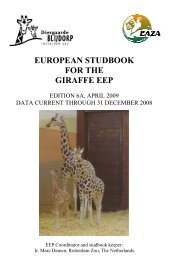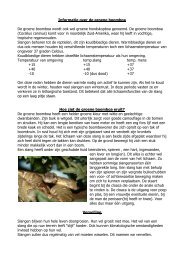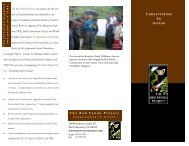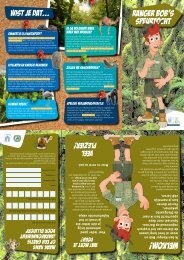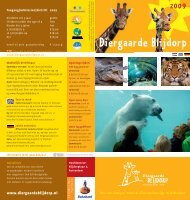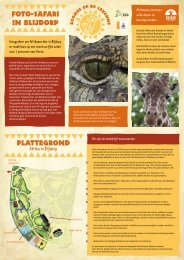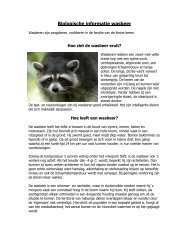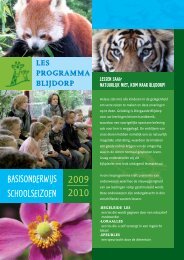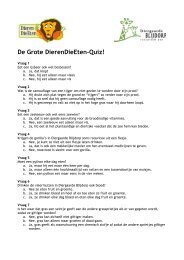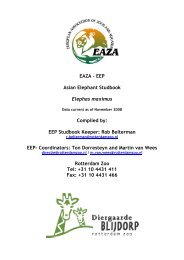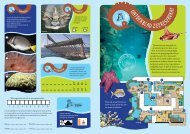Create successful ePaper yourself
Turn your PDF publications into a flip-book with our unique Google optimized e-Paper software.
<strong>EEP</strong> STUDBOOK CROWNED PIGEONS<br />
Logging might also be introduced into the area indirectly, by establishing an oil palm<br />
plantation organisation into a series of small-holdings, although the residents of the basin<br />
have already rejected such a proposal (Makamet and Sengo in CIRAP, 1996). The residents<br />
still are divided about the prospect of logging projects on their land.<br />
Lately, with support from organisations like CI and the FSP-PNG, the landowners are<br />
developing three tightly integrated enterprises based on scientific, recreational a non-timber<br />
uses of forest resources. Major components of this integrated conservation development<br />
project include the establishment of a rainforest centre for research. A walking track between<br />
the Wan Ecology Institute and the basin (which includes the famous Bulldog-track, used in<br />
WW II by the Australians, where still a lot of remaining equipment can be found) and the<br />
construction of guest houses for tourists and research use (Miller and Sekhran, 1995). In this<br />
project, the inhabitants of the villages can serve as guides, translators, carriers, cooks and so<br />
on. Furthermore they can sell their forest product to the tourists.<br />
Traveling<br />
Transportation out of the basin is expensive and unreliable. The plane to Wau costed K 50<br />
each way in 1997. Although scheduled to arrive twice a week (Wednesday and Saturday),<br />
these flights are often postponed because of the fog that block the mountain gap to the<br />
northeast of Kakoro. Even in clear weather, charters to other airstrips may be given<br />
precedence over regularly scheduled flights to Kakoro and Tekadu. Less frequent, one may be<br />
able to fly in or out of the basin on the provincial charter for Kerema, which is supposed to<br />
deliver paycheques and transport government transport personnel every fortnight. It is also<br />
possible to reach POM by travelling south along the Lakekamu River by (motor-) canoe to its<br />
junction with the Tauri River, where a road links the settlement of Iokea to the city. In 1997,<br />
this canoe trip costed K 40, with a surcharge of K 5 per large bag of betelnut. Passage along<br />
the road costed an additional K 10.<br />
Health<br />
The major sicknesses which affects the people in the Lakekamu Basin are malaria, asthma,<br />
dysentery and other lung related diseases such as TB. Other minor diseases are also common<br />
in the area, such as cough, fever, headache, scabies and sores (Pupang, 1996). Furthermore, in<br />
extremely dry periods, typhus is also a major problem. There are two health-centers (or aidposts)<br />
in the Basin (in Kakoro and Tekadu), but they are not well equipped and not well<br />
manned; most of the time nobody is present or otherwise the only medicine they can give is<br />
"advice".<br />
135



